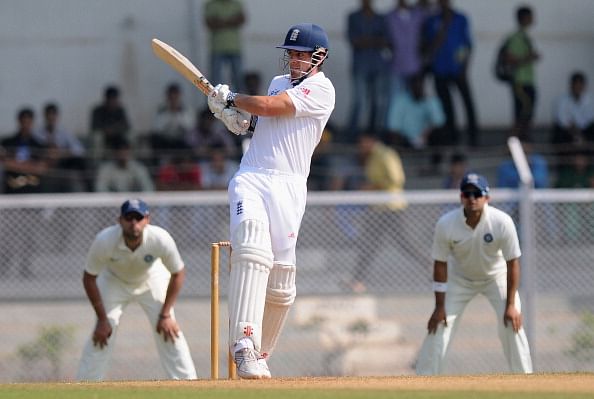
England v India 2014, 1st Test: If India win the toss, should they bat or bowl first?

In the Indian cricketing calendar, 9 July 2014 was long coming, and, for some Indian cricket followers, the wait must have felt longer than it actually was. But, with the first day of a long, 5-match Test series set to kick off in a couple of hours time, I have to say that I am ambivalent about Team India putting up a good show and ending their perennial quest to win an away Test match, let alone a series.
When MS Dhoni’s devils take the field at Nottingham later this afternoon, there will be a small contingent in that Indian camp that will remember bits and pieces of what happened at the same venue when India toured England last time around. India won the toss and chose to field first on a murky English morning, and their medium pacers – Ishant Sharma, Shanthakumaran Sreesanth and Praveen Kumar – ripped the strong English batting line-up into shreds.
The Indian bowlers, who were on song that day, had England tottering at 124-8 at one stage. Surely, our imaginative minds were triggered to think of a series-leveling win. However, what transpired post that horrendous morning for England is best left unsaid.
Now, with a new series on the brink for India, the main topic of conversation must be the surface on offer at Trent Bridge, Nottingham. Steve Birks, the curator at the ground, uttered days ago that he didn’t want to prepare a pitch that might see the sides bowled out for 180.
There are two different ways to look at that statement: The foremost implication of that statement is that he doesn’t want to prepare a surface where the Indian bowlers could rule the roost and add misery to an already under-firing English batting line-up. The second, and the most telling, indication of that statement is that, by not leaving enough grass on the surface for day one of a Test match, the curator is trying to disguise the conditions in favor of England: the England pacers could still take an advantage out of it, while their Indian counterparts need apparent assistance.
The surface, which usually is hard and bouncy, could disconcert the Indian batting line-up that historically doesn’t like rising balls. This is the kind of surface that someone like Stuart Broad and Liam Plunkett could deem amiable to their style of bowling.
On such a surface, what should the Indian captain’s approach be?
While Dhoni will have a close look at the surface before taking a decision on whether to bat or bowl first, he’s generally a captain who likes to get a feel of the conditions and settle into the series slowly; hence, the 33-year-old likes to bowl first if he wins the toss. The general notion is that, in overseas conditions, the ball darts around a bit for about one and a half days of a Test match and then slowly starts losing its venom by the end of day two.
So, if you bowl first and keep the batting side to somewhere around 300 or 350, you would have done a good job and set yourself up nicely to even go on and win the Test match.
That being said, and with lot of cynics terming the Indian bowlers ‘incapable’ of picking 20 wickets, it could put even more pressure on the sophomoric Indian bowling line-up if Dhoni inserts the home side in.
On the flip side of the coin, though, the Indian batting has done splendidly well in the tours of South Africa and New Zealand earlier in the year, and all the batsmen seem to be in good touch, going by what they have done in the warm-up games.
Taking all these into account, I’d elect to bat first and put my faith on India’s strength, which is batting, to start the series off on a good note and see off the initial period without much damage done: something that helped India remain competitive in New Zealand and South Africa.
So, there you go: win the toss and bat first would be my message to our captain marvel, MS Dhoni.